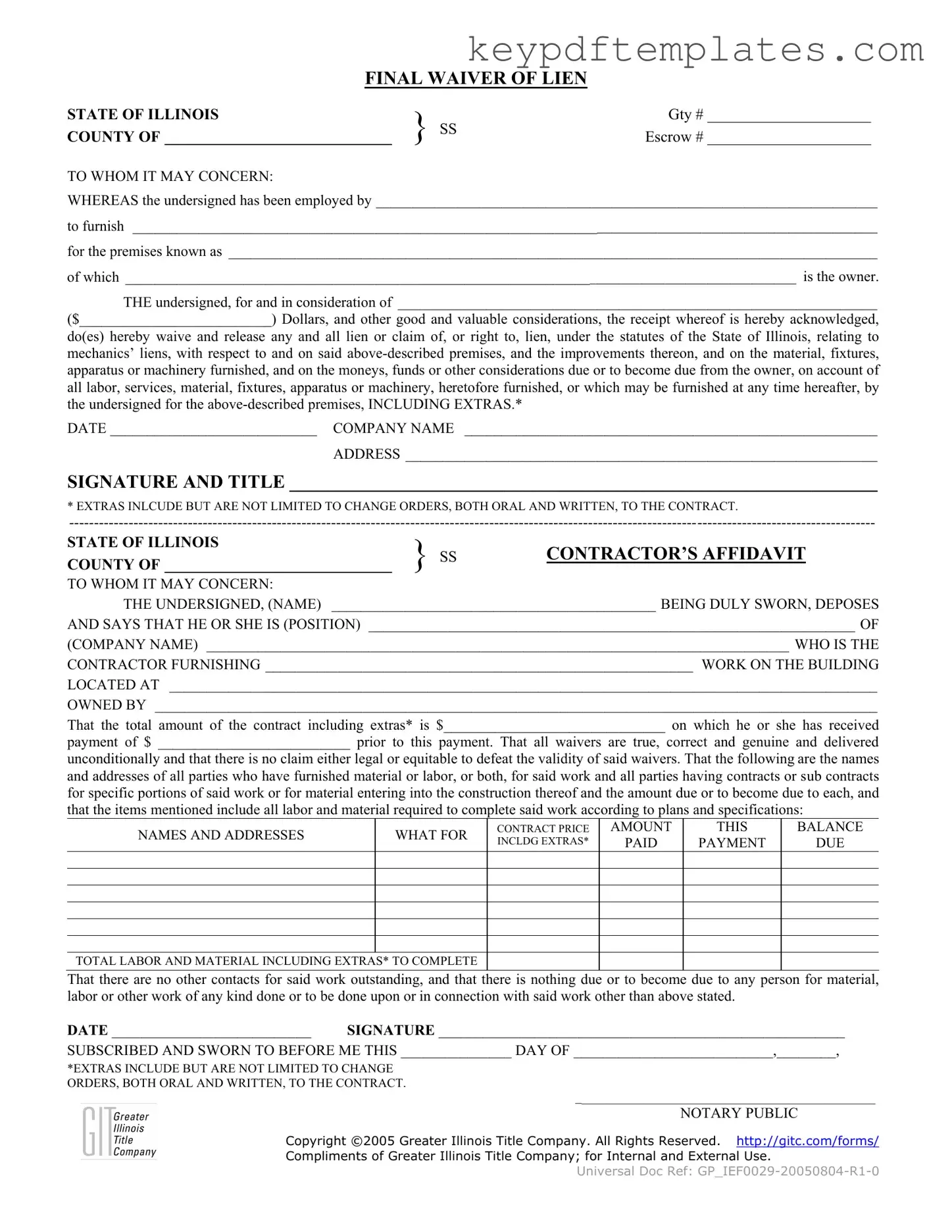Get Illinois Final Waiver Of Lien Form
The Illinois Final Waiver of Lien form is a legal document used by contractors and subcontractors to formally relinquish their right to file a lien against a property. This waiver is typically executed after payment has been received for work completed, ensuring that the property owner is free from any claims related to unpaid services or materials. Understanding this form is essential for both contractors and property owners to maintain clear and secure property transactions.
Modify Document Online
